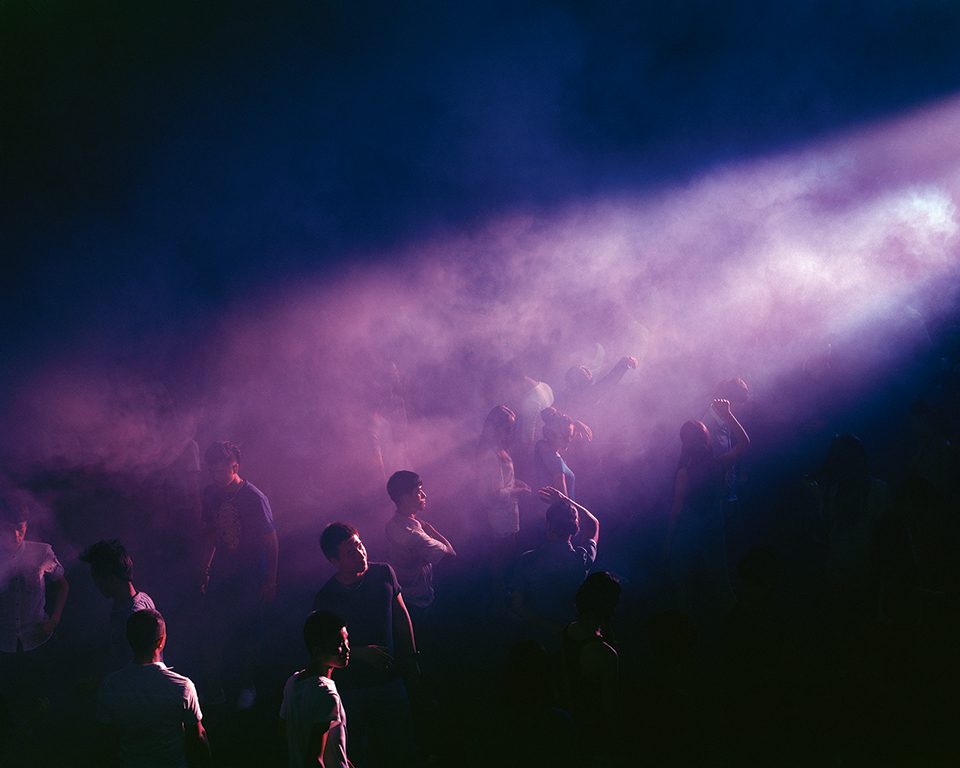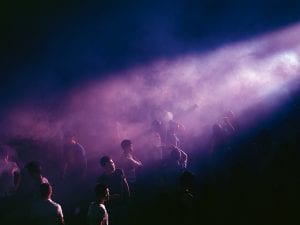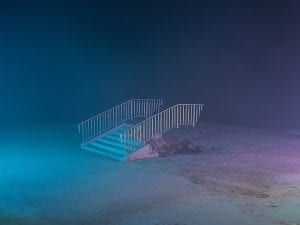Contemporary Chinese artists demonstrate a consideration of censorship in the wider industry, offering figurative and deeply metaphorical messages.
On 9 November 2015, at a Christie’s auction in New York, an oil painting of a nude woman was sold for $170.4 million. The sale would prove to be the second-highest price ever paid for an artwork at auction. It was bought with an American Express card. The painting was by Amedeo Modigliani, an early 20th century Italian Jewish painter and sculptor who died at the age of 35. The buyer was a former taxi driver, Liu Yiqian, who had risen from a large working-class family in Shanghai in the 1960s to become one of China’s most famous multi-billionaires. After dropping out of middle school, he began selling leather handbags, and then later drove a taxi, before finding more successful ways to profit from the liberalisation of Chinese markets in the early 1990s.
Liu Yiqian is a controversial figure – he’s regarded by many, and indeed is happy to be called, a “tuhao,” a popular Chinese term for the nouveaux rich. Heads were turned when later he bought a tiny Ming dynasty porcelain cup for $36.3 million at a Sotheby’s auction, and proceeded to be photographed in the bar drinking tea from the 600-year-old cup. Yet these purchases also serve to highlight a remarkable meeting of Chinese wealth and the western art market. They led a cohort of collectors who, quite suddenly, began dominating the auction houses in the years following the millennium.
This September, PHOTOFAIRS, devised by the World Photography Organisation, launched its fifth Shanghai edition, allowing people from the city to buy artwork from across the world – and from across China. Since the inaugural edition, four dedicated photography museums have opened, and more than 70 exhibitions have taken place in the city. This number is set to continue to expand dramatically, with a 250% increase in the number of exhibitions in 2017 compared to 2014. As for the event, it reports visitor growth as exceeding numbers by over half: 64% since 2014.
The expansion of PHOTOFAIRS, coupled with the ostentatious rise of super-collectors, serve to capture the Chinese art market at a pivotal time of emergence. In the past decade, photography has moved forward as the nation’s most popular medium for purchase. This has been powered by the so-called “fuerdai” (which translates literally as “second generation rich”). Many of these collectors are millennials, who have come of age as China has globalised, with the spread of the internet allowing for an understanding of the wider world like never before. These individuals comprise one of the key demographics for buyers this year.
Yet what are they buying? In China, any photograph, or, for that matter, any creation of artwork or expression of journalism is subject to approval from the Communist Party, the founding and ruling singular group. If a practitioner is censored by the state apparatus, there can be widespread implications on their career and social freedom, including whether they have the ability to leave and return to the country, how they are seen within artistic circles, and their acceptance in everyday civic life. All this provides photographers with a complex set of issues – how do they express their concerns, whilst also successfully navigating the authorities? How do they remain sanctioned, but create truthful artwork?
It’s important to contextualise photography’s remarkable rise in China. During the Cultural Revolution – an era largely recognised as between 1966 to 1976 – image-making was used, effectively and comprehensively, as a propagandist tool by the state. Practitioners were told what to document, and their negatives were held by authorities. Any privately-held pictures in the country were deemed to be illegal.
As the 1970s wore on, an underground movement of defiantly unofficial photojournalists emerged, propelled by the ideals of confronting power with unvarnished, unmanipulated truth. This pioneering revolution was largely quashed, or at least kept securely underground, by censors keen to hide the inequities of the system. From this dialectic between state-backed photography and insurgent journalism came a virulent third strand – an experimental, highly conceptual and figurative style of fine art photography.
In the midst of the photojournalism movement was Liu Heung Shing, a Pulitzer-Prize winning artist who left the country to become Time magazine’s foreign correspondent in Los Angeles, New Delhi, Seoul and Moscow. In the early 1980s, he returned home to create the seminal photobook China After Mao. Newsweek referred to the publication as “a uniquely informed transcultural perspective on the complexities of the post-Mao era,” and described Liu himself as “the Henri Cartier-Bresson of China.” In 2015, Liu Heung Shing opened the Shanghai Centre of Photography, one of the largest public-facing institutions of its kind.
He notes: “When I was growing up, all the photographs in the newspapers were fake.” After the sweeping Cultural Revolution and the free market reforms of the 1980s, “the economy accelerated at a speed no-one expected, and we forgot that these ideological constraints are always there. Photography is accepted if it doesn’t threaten the order of the government.”
For Liu Heung Shing, the dearth of photojournalism since the 1970s heyday, and its replacement by a newer, more experimental strain of compositions, is troubling. “Through social media, exhibitions and travelling, photography has become hugely popular for the millennial generation,” he says. “This art is something that can keep people happy, so the scrutiny is relaxed. But [the government] is still behind it.”
One of these new practitioners – and one of the most commercially successful artists in recent years – is 38-year-old Chen Wei. At PHOTOFAIRS, his works are hung alongside a mini retrospective. Viewers see ravens picking through trash in a tiny, claustrophobic space. Or a stained tablecloth spread over a long dining table vacant of food or life. They will see televisions standing side-by-side in tiny private cubicles, or a club-like gathering of ghost-like youngsters. In other photographs, we see a pair of glasses with the lenses blown out, as if the owner’s head has exploded. In another, a man stands on an obelisk-like podium, dogs prowling beneath, their eyes turned up towards him. Empty landscapes are often used – where doors lead to nowhere and bold, concrete structures allude to open spaces. They are dark and haunting pieces, ones that swim deep into the fathoms of your brain. Although lacking overt – or perceivably obvious – political commentary, they seem to suggest that we are at risk of losing our freedom, or that it has already been taken from us without our knowledge. Yet, on the surface level, they are photographs that constantly elude any ideological definition. Chen’s images have all passed the censorship test and will be on sale for thousands of pounds. If recent history is anything to go by, there’s little doubt he will prove widely popular with young buyers.
Born in 1980, Chen was introduced to a China that was still responding to the arrest of the notorious Gang of Four in 1976 and adapting to the beginnings of Deng Xiaoping’s free market reforms. His teenage years coincided with the country establishing itself as the world’s new superpower – a one-party state based on untold resources and the relentless embrace of commerce. At the Mayfair Gallery of Brown Fine Arts in 2014, he spoke of his work as being “a reaction to Chinese life.” But the pieces remain defiantly oblique, depicting troubled human environments absent of people.
The most important picture he has ever taken, Chen noted, is of a decrepit statue of a young boy. He is standing in a fountain, and adorned with gold coins, which glitter in the water around the podium on which he stands. “These fountains were everywhere in China during the 1980s and 1990s,” he said, explaining that the boy’s posture was one of deference to communism. “Nowadays, all these monuments are demolished. You can barely find one anywhere. Now they are abstract. This is the government’s decision.”
In a further interview given to Ocula in 2017, Chen commented on what motivates him to make his photographs. The answer? “Because of tragedy. These are the forces that drive my creation. They are more like a quality of spirit. Different people have subtle understandings of them. For example, in the New City series, I hope to highlight the gap between people’s imagination of urbanity and the reality. The space lying inbetween is one of the tragic elements.”
It’s possible Chen is merely acting out a purposeful strategy here – for he does not want to overtly critique the system in which he so successfully exists. It’s easy to censor a photograph depicting, for example, a political protestor in conflict with the police, but much more difficult to flag up an image of violently broken glasses, or of a chair splattered with the red of pelted tomatoes. Chen is carefully and skilfully making statements through the judicious use of metaphor, symbolism and multivalence, and the resulting images, though less direct, are all the more powerful for it.
As James Donald states in Framing Impossible Futures: Chen Wei’s Surreal Documentation and The Demise of Hyperbole, “Chen is part of an emerging post-cultural revolution, one wholly unlike those of generations past. Chen’s age group has begun to concern itself with themes transcending the disarray spawned in the aftermath of Mao Zedong’s disastrous nationwide social experiment. He is part of a generation less focused on political history or obvious social criticisms than wider personal and intellectual freedoms and the individual’s place in a now modern and developed China. History for these populations has been obscured by economic reforms, and the speed and scale of development in the contemporary country which they have witnessed.”
So how are practitioners like Chen finding a new kind of aestheticism in today’s market? How are they building connections and breaking down barriers in today’s media-saturated landscape? Perhaps censorship itself is an unexpected element that – whilst tricky to navigate – provides some source of inspiration and motivation. As Professor Jiang Jiehong, Director of the Centre for Chinese Visual Arts at Birmingham City University and editor of the Journal of Contemporary Chinese Art concludes: “Avoiding censorship is a creative process. I see that method as a reinforcement of the artist’s strategy … It’s too easy and too lazy to say ‘ok, I give up.’ Scaling that wall is part of the beauty.”
Tom Seymour
www.photofairs.org/shanghai










